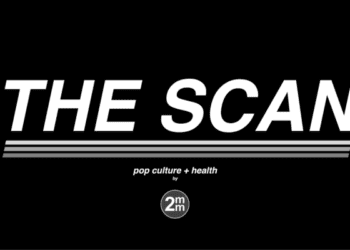Women’s Health Initiative results in high-value economic return
Image: PD
1. From a model of simulated health outcomes based on the Women’s Health Initiative (WHI) estrogen plus progestin trial, the net economic return of the study was about $37.1 billion, or $140 per dollar invested
Evidence Rating Level: 2 (Good)
Study Rundown: Although publicly funded research frequently evaluates patient outcomes, it rarely examines the economic impact from the perspective of federal health spending. In this study, the authors use a disease-simulation model to evaluate the clinical and economic outcomes of the 2002 WHI estrogen plus progestin clinical trial, which led to a significant reduction in combined hormonal therapy (cHT) in postmenopausal women. From this model, they estimated 9.5 million women would have used cHT without the WHI trial, compared to 5.2 million with it. This simulation also demonstrated 126,000 fewer cases of breast cancer, 76,000 fewer cases of cardiovascular disease, and 80,000 fewer cases of thromboembolism due to the WHI trial, in addition to 263,000 more fractures and 15,000 more cases of colorectal cancer. In economic terms, $35.2 billion was saved in direct medical costs due to the WHI trial, largely from associated office visits, decreased breast cancer incidence, and decreased cardiovascular disease incidence.
Overall, the net monetary benefit of the WHI trial was $49.5 billion, which exceeded the cost of the $260 million trial itself.
The major weaknesses of this study are the simplification of the model, which could not account for all potential cHT associations, and the lack of consideration for nonmedical and indirect costs. However, this model demonstrated that in addition to the clinical benefits of the WHI trial, it also likely provided a substantial return on investment in terms of health care expenditures.
Click to read the study, published today in the Annals of Internal Medicine
Relevant Reading: Risks and Benefits of Estrogen Plus Progestin in Healthy Postmenopausal Women
In-Depth [modeling study]: The model simulated the 10-year health outcomes of postmenopausal women in both a WHI trial and a non-WHI trial setting. In addition to estimating disease risks, cHT use, and mortality, quality-adjusted life years (QALYs) were calculated to measure gain and cost of economic value, with a willingness-to-pay level of $100,000 per QALY. In their model, the mean duration of cHT use decreased from 4.3 years in a non-WHI trial setting to 3.1 years with the WHI-trial. In addition to the direct medical savings, the WHI-trial scenario also included an increase of 145,000 QALYs, largely due to reduced breast cancer and cardiovascular disease. The total monetary benefits of the WHI and non-WHI scenarios were $23.56 trillion and 23.51 trillion respectively, with a savings difference of $49.5 billion (95% CI, $31.5-$68.2 billion). One limitation of this analysis is that it requires the assumption that 75% of the decline in cHT use is attributed to the WHI trial itself, but alternative analyses demonstrated that even if 50-100% of the reduction of cHT use derived from the trial, the monetary gain was still positive, between $24.8 billion and $49.5 billion respectively. Additionally, decreasing willingness-to-pay to $50,000 per QALY and increasing the estimated cHT quality-of-life benefit 4-fold both resulted in clear economic gains. Even with conservative assumptions in this model, the WHI cHT trial likely provided clinical and economic benefits.
More from this author: Lifestyle interventions can reduce type 2 diabetes among high-risk patients Home scoring system may prevent unnecessary pharyngitis clinic visits No evidence for the cognitive side-effects of statins Household firearm accessibility increases risk of suicide and homicideTranscatheter aortic valve replacement provides only minor benefit to quality of life No difference in statin-related myalgias compared to placebo in single-patient trials, HIV infection may increase rate of HCV-related hepatic decompensation
©2012-2014 2minutemedicine.com. All rights reserved. No works may be reproduced without expressed written consent from 2minutemedicine.com. Disclaimer: We present factual information directly from peer reviewed medical journals. No post should be construed as medical advice and is not intended as such by the authors, editors, staff or by 2minutemedicine.com. PLEASE SEE A HEALTHCARE PROVIDER IN YOUR AREA IF YOU SEEK MEDICAL ADVICE OF ANY SORT.









